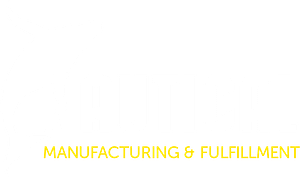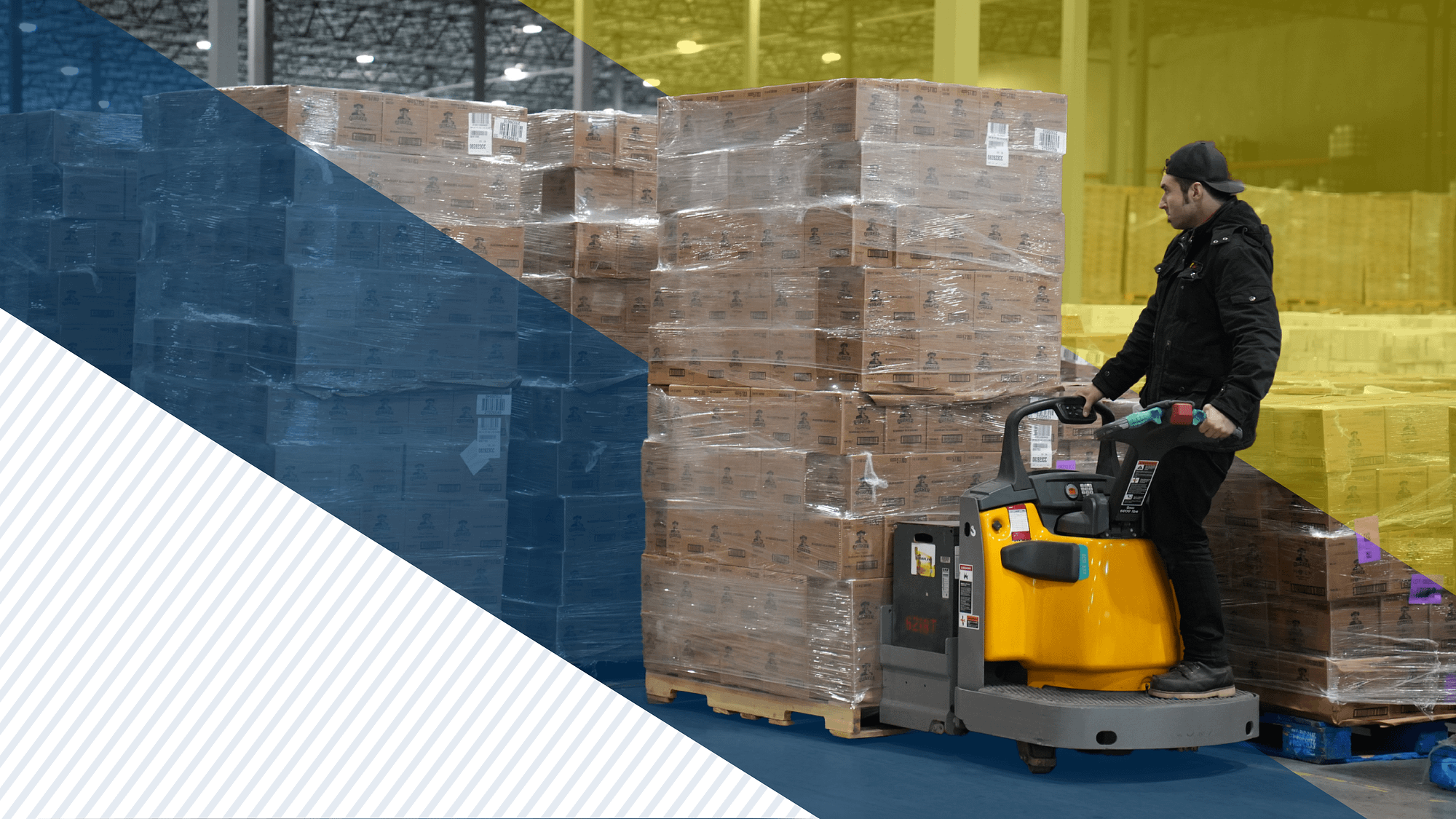B2B supply chain partners are critical for ensuring that a business’ products are efficiently stored, organized, and delivered to retail locations or directly to end consumers. There are many aspects to retail storage and distribution, which we’ll explore in this article.
What is Retail Distribution?
Effective retail storage and distribution contribute significantly to the overall success of retailers by ensuring that products are available to meet customer demand while optimizing costs and minimizing inefficiencies in the supply chain. Retail distribution encompasses the following processes:
- Warehousing: Retailers typically utilize warehouses or distribution centers to store their inventory. Warehouses serve as hubs where goods are received, sorted, and stored before being distributed to retail stores or directly to customers.
- Inventory Management: Efficient inventory management is crucial for retailers. This involves tracking stock levels, monitoring product turnover rates, and ensuring that popular items are readily available while minimizing excess stock to control costs.
- Order Fulfillment: The distribution process includes fulfilling orders, whether they are from individual customers who purchase online or from retail stores replenishing their inventory. This involves picking products from the warehouse, packing them, and preparing them for shipment.
- Transportation and Logistics: Retail distribution requires a well-organized transportation network to move goods from warehouses to retail locations or directly to consumers. This involves selecting appropriate carriers, optimizing routes, and managing the transportation logistics efficiently.
- Cross-Docking: Some retail distribution centers implement cross-docking strategies where products are transferred directly from inbound to outbound transportation, minimizing storage time and expediting the distribution process.
- Reverse Logistics: Retailers also manage the reverse logistics process, which involves handling product returns, recycling, or disposing of unsold or defective items, and managing the flow of goods back through the supply chain.
How do Warehouse Partners Help Retailers with Storage Needs?
Warehouse partners play a vital role in supporting retail storage by offering additional capacity, flexibility, efficient inventory management, and specialized solutions. Warehouse partners can help retailers by providing:
- Additional Storage Capacity: Warehousing partners offer additional storage space beyond what a retail store may have in its own facilities. This is particularly beneficial during peak seasons, promotions, or when dealing with a sudden influx of inventory.
- Flexibility and Scalability: As retailers grow, their fulfillment needs evolve, and 3PLs can seamlessly adapt to these changes. Whether it’s handling increased order volumes during peak seasons or adjusting to market fluctuations, 3PLs provide the flexibility necessary for businesses to scale their B2B operations without the burden of managing logistics intricacies.
- Order Fulfillment Services: Warehousing partners often handle order fulfillment, including picking, packing, and shipping of products directly to customers or to retail locations. This streamlines the order processing workflow for retailers, especially in the context of e-commerce.
- Cross-Docking Services: Some warehouse partners offer cross-docking services, allowing for the seamless transfer of products from inbound shipments to outbound transportation. This can reduce the need for extensive storage and expedite the distribution process.
- Specialized Storage Solutions: Warehousing partners may offer specialized storage solutions, such as temperature-controlled storage for perishable goods or secure storage for high-value items. This ensures that diverse product types are stored under appropriate conditions.
Types of Retail Fulfillment
3PL partners offer various order fulfillment methods to assist retail businesses in efficiently processing and delivering customer orders. The main order fulfillment methods provided by 3PL partners include:
- Pick and Pack: Pick and pack includes selecting individual items from the inventory (picking) and then packing them into the appropriate packaging for shipment (packing). This method is commonly used for e-commerce orders and direct-to-consumer shipments.
- Bulk Fulfillment: For retailers with large orders or those supplying products to other businesses, 3PL partners can handle bulk fulfillment using pallet in / pallet out or pallet in / carton out methods. This involves picking and packing items in larger quantities for shipment to retail locations or distribution centers.
- Cross-Docking: Cross-docking is where products are quickly transferred from inbound shipments to outbound transportation without long-term storage. This approach minimizes storage time and expedites the distribution process, suitable for fast-moving inventory.
- Direct-to-Store Fulfillment: 3PL partners can ship products directly to retail stores, bypassing the retailer’s distribution center. This method is often used for retailers with multiple locations where products are shipped to individual stores based on demand.
- Dropshipping: In a dropshipping model, the 3PL partner ships products directly to the end customer on behalf of the retailer. The retailer does not hold the inventory, and the 3PL partner handles the entire fulfillment process.
- Kitting and Assembly: Kitting services involve assembling individual items into packages or kits before shipping. This is useful for retailers selling bundled products, promotional packages, or items that require additional assembly.
What is Pallet In/Pallet Out?
Many businesses leverage a Pallet In/Pallet Out (PIPO) approach to their B2B fulfillment process. PIPO typically refers to a warehouse or distribution center process where goods are received on pallets and shipped out the same way they came in. This method is commonly used in businesses that handle large quantities of products, especially in the context of wholesale or bulk distribution.
Here’s a breakdown of the process:
- Pallet In (Inbound)
- Goods are received from suppliers or manufacturers on pallets.
- These pallets are unloaded, and the products are inspected and scanned into the warehouse inventory.
- Plan space in the racks that makes sense in alignment with their existing inventory
- Goods are received from suppliers or manufacturers on pallets.
- Storage and Order Preparation
- Received products are stored in the warehouse, often on pallet racking.
- When customer orders are received, the warehouse staff picks the required quantity of products from the pallets to fulfill the orders.
- Received products are stored in the warehouse, often on pallet racking.
- Pallet Out (Outbound)
- The picked products are assembled in the staging area for outbound shipments.
- Pallets are loaded onto trucks for transportation to customers, retailers, or other distribution points.
- This method ensures that products are shipped in larger quantities, optimizing transportation and reducing handling costs.
- The picked products are assembled in the staging area for outbound shipments.
Additionally, companies may choose a Pallet In/Carton Out (PICO) fulfillment method. This will follow the same process but instead of picking full pallets of product, warehouse staff will pick individual cartons off of the pallets and ship those out.
What are FIFO and FILO?
FIFO (First In, First Out) and LIFO (Last In, First Out) are inventory management methods that dictate the order in which goods are stored and subsequently picked:
- FIFO: In a FIFO system, the oldest pallets (representing the first items to be received), are placed in the storage area. As new inventory arrives, it is added to the storage area behind the existing pallets. When it comes time to fulfill orders or restock shelves, the warehouse staff picks and ships the goods from the front of the storage area.
- LIFO: In a LIFO system, the most recently acquired or produced items are assumed to be the first ones sold or used. This means that the cost of goods sold (COGS) is based on the most recent costs, while the ending inventory reflects the older, lower-cost items.
How 3PLs Help Businesses With B2B Fulfillment
Many enterprises turn to 3PL companies to optimize their supply chain management and elevate their fulfillment capabilities. Here’s how they play a pivotal role in helping businesses enhance B2B fulfillment operations.
Focus On Core Competencies
By partnering with a warehouse, retail businesses can focus on their core competencies, such as marketing, sales, and customer service, while leaving the logistics and storage aspects to experts. This can lead to improved overall business efficiency.
Expertise in Logistics
B2B fulfillment involves intricate logistics processes that 3PLs specialize in. They navigate these complexities, leveraging their expertise to optimize supply chains. From warehouse management systems to order processing and tracking, a 3PL partner allows businesses to stay ahead in the competitive B2B landscape.
Cost Efficiency
Operating an in-house fulfillment center can be a significant financial burden for many businesses. 3PLs offer a cost-effective alternative by pooling resources and spreading costs across multiple clients. This allows businesses to benefit from economies of scale, reducing overall fulfillment expenses and freeing up capital for other initiatives.
Improved Customer Experience
Timely and accurate deliveries are critical for customer satisfaction in B2B relationships. 3PLs streamline fulfillment processes, reducing lead times and minimizing errors. This not only enhances customer satisfaction but also strengthens relationships with business partners, leading to repeat business and positive referrals.
Technology Used For B2B Fulfillment
B2B fulfillment relies on various technologies to streamline processes, enhance efficiency, and meet the demands of modern supply chain management. Here are some key technologies used in B2B fulfillment:
- Warehouse Management Systems: A warehouse management system (WMS) is a software application designed to manage and optimize warehouse operations. It helps in tracking inventory levels, managing order processing, and improving overall warehouse efficiency.
- Enterprise Resource Planning Systems: Enterprise resource planning (ERP) systems integrate various business processes, including order management, inventory control, and financials. In B2B fulfillment, they play a crucial role in providing a centralized platform for managing and coordinating different aspects of the supply chain.
- Barcode Scanning and RFID Technology: Barcode scanning and Radio-Frequency Identification (RFID) technologies are used for accurate tracking and tracing of products within the warehouse. These technologies help reduce errors in picking and packing processes.
- Artificial Intelligence and Machine Learning: Artificial Intelligence (AI) and Machine Learning (ML) are increasingly used in B2B fulfillment for demand forecasting, predictive analytics, and decision-making. These technologies help businesses optimize inventory levels, reduce stockouts, and enhance overall supply chain visibility.
B2B Frequently Asked Questions
How does B2B fulfillment differ from B2C fulfillment?
B2B fulfillment typically involves larger quantities, bulk shipments, and more complex order processes compared to B2C fulfillment. B2B transactions often require customized solutions to meet the specific needs of business customers.
What are the key components of B2B fulfillment?
Key components include order processing, picking and packing, shipping and logistics, and inventory management. These elements work together to ensure the smooth flow of products from suppliers to business customers.
Why is efficient B2B fulfillment important?
Efficient B2B fulfillment is crucial for maintaining positive business relationships, meeting customer expectations, reducing costs, and ensuring the timely and accurate delivery of products. It contributes to overall customer satisfaction and loyalty.
Is outsourcing B2B fulfillment a common practice?
Yes, many businesses choose to outsource their B2B fulfillment to third-party logistics (3PL) providers. Outsourcing allows businesses to leverage the expertise and infrastructure of specialized fulfillment partners, focusing on their core competencies.
Work With Nautical – The Perfect B2B Fulfillment Partner
Choosing Nautical as your B2B fulfillment partner means aligning your business with expertise, advanced technology solutions, and a commitment to tailored order processing. Our dedicated team is ready to streamline your supply chain, optimize your operations, and contribute to the overall success of your business. With Nautical, you’re not just getting a fulfillment service; you’re gaining a strategic partner dedicated to meeting your specific needs and ensuring the seamless flow of products to your business customers. With a brand new 465,000 sq ft warehouse in Kansas City, we can partner with businesses of any size. Reach out to our team of experts today to see how we can help your fulfillment process!




